Ah, the exhilaration of seeing a tiny green sprout pushing its way up from a seemingly lifeless seed. The moment that seed germinates, it signifies the promise of lush greenery, colorful blooms, or bountiful crops. However, with this excitement comes the true test of every gardener’s mettle: patience.
We’ve all been there—obsessively checking pots, hoping to see a sign of life. But how long is too long? When to give up on seeds germination? This article delves deep into the world of seed germination, guiding you on when to hold on with hope and when to accept the bitter pill of nature’s unpredictability.
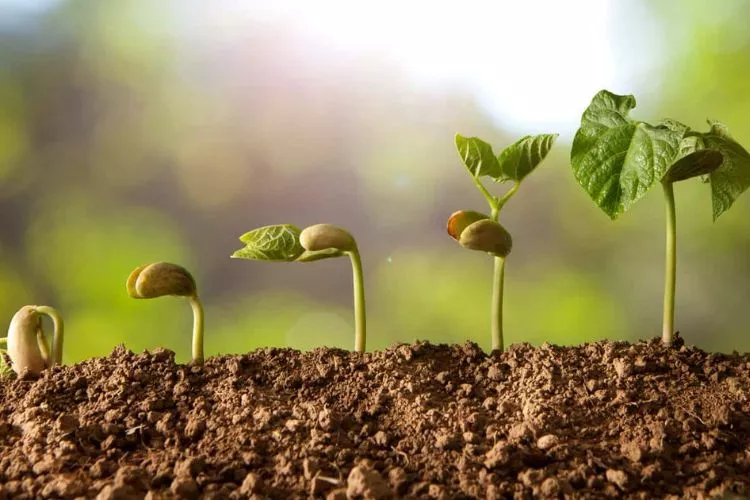
Table of Contents
When to give up on seeds germination?
It depends on the type of seed, but generally, under ideal conditions, most seeds should germinate within 2-3 weeks. Some might take longer, especially if they have a hard shell. If there’s no sign of life after around 4 weeks or if the seeds turn mushy or moldy, it’s typically safe to abandon these seeds.
Be sure to maintain a favorable environment for germination – warm temperature, sufficient moisture, and proper planting depth – to improve chances of success for future seed planting endeavors. Always refer to specific seed packet instructions as timings can vary.
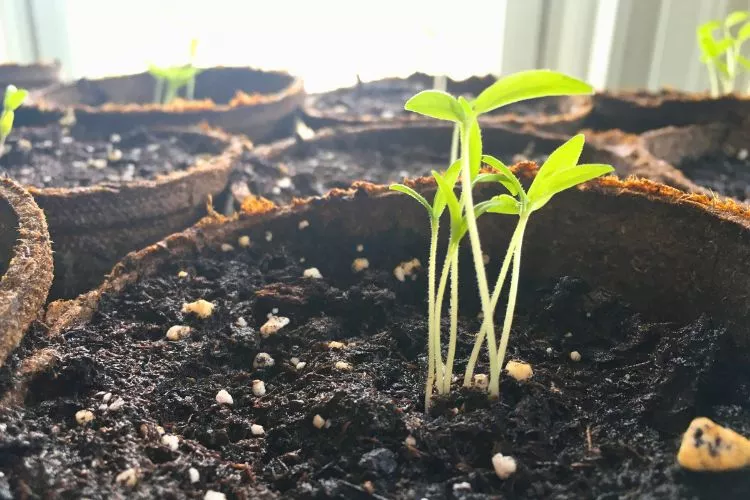
Setting a Reasonable Time Limit
Every seed has its germination timeframe, often mentioned on its packet. Add a grace period considering external factors, but be wary of waiting indefinitely. If a seed hasn’t sprouted within its expected window, plus a reasonable extension, it might be time to consider it a loss.
This doesn’t mean you failed; it’s a natural part of gardening. By setting a time limit, you also free up space and resources for new growth opportunities.
Recognizing When the Seedling Won’t Recover
Physical signs often indicate a seedling’s state. Discoloration, wilting, or signs of rot are distress signals. If interventions like adjusting water, light, or soil quality don’t yield improvements within a set period, the seedling might be past the point of recovery.
It’s essential to trust your observations and intuition. Remember, gardening is as much about learning from failures as it is about celebrating successes.
Ethical Considerations in Discarding
Discarding a plant or seedling isn’t just a horticultural decision but an ethical one too. Consider composting them, returning their nutrients back to the earth. If discarding outdoors, ensure they don’t become invasive or disrupt local ecosystems. Always approach this final act with respect and gratitude. These seedlings, even in their struggle, provided valuable lessons.
In the grand tapestry of gardening, each experience, success or setback, contributes to our growth as caregivers of the earth. It’s about recognizing when to nurture, when to adjust, and, sometimes, when to bid farewell.
Understanding the Germination Process
Diving into the world of plants, it’s essential first to unravel the mysteries behind the germination process. This magical transformation, where a dormant seed awakens to produce life, is more than just nature’s show. It’s a dance of elements, factors, and conditions working in symphony.
Before we delve into when to throw in the trowel, it’s crucial to grasp the intricacies of what germination truly entails. In this section, we’ll demystify the stages and factors that influence a seed’s journey from dormancy to sprouting. Equipped with this knowledge, you’ll be better positioned to judge the progress of your gardening endeavors. Let’s dive in.
What is seed germination?
Seed germination is a fascinating transition from a static, dormant state to the first stages of plant growth. Think of a seed as a tiny plant encased in a protective shell, complete with the food it needs to start its journey. Germination is initiated when the seed absorbs water, swells, and breaks its outer coating.
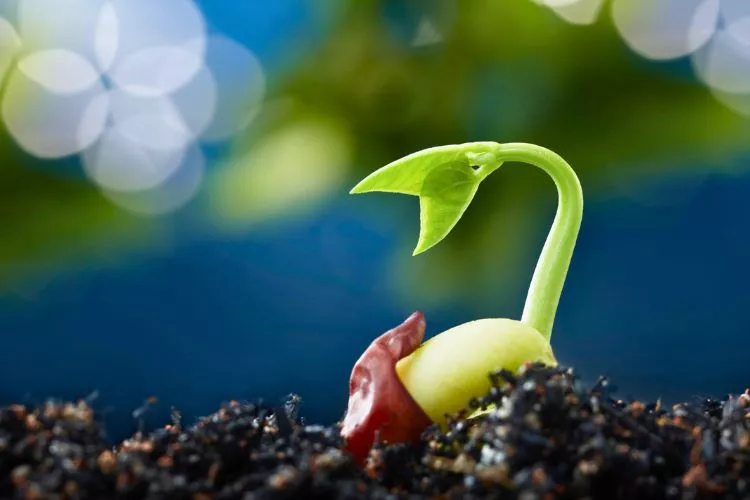
This triggers a series of biochemical processes leading to the emergence of the primary root, called the radicle, followed by the shoot. The culmination of this process is the moment a green sprout becomes visible above the soil.
Factors affecting seed germination
Various factors influence the success and speed of seed germination. Understanding these can help gardeners create optimal conditions and set realistic expectations for seed sprouting.
Environmental conditions
Seeds are sensitive to their surroundings. The right temperature is crucial, as too cold or too hot conditions can hinder germination. Similarly, moisture plays a pivotal role. Seeds need adequate water to initiate the germination process, but too much can cause rot.
Light, too, can be a determining factor. Some seeds require complete darkness, while others need light to germinate. Oxygen, often overlooked, is also essential for supporting the seed’s cellular respiration during this phase.
Seed quality
Not all seeds are created equal. Fresh seeds tend to have higher germination rates than old ones. Furthermore, seeds from healthy parent plants, free from diseases or genetic issues, have a better chance of successful germination. It’s also worth noting that some seeds come with a natural dormancy period and require specific conditions or treatments to “wake up.”
Ideal germination timeline
While it’s tempting to expect sprouts within a few days, the reality is that germination timelines vary widely between plant species. Some seeds, like radishes, might sprout within a week, while others, like parsley, can take up to a month or more.
It’s essential to familiarize oneself with the typical germination period for the specific seeds you’re planting. This knowledge helps set realistic expectations and can prevent undue stress during the waiting period.
Signs of Hope: Early Germination Indicators
Amidst the suspense of the waiting game, the first glimmers of germination bring a surge of joy and hope. These early signs serve as nature’s assurance that your nurturing efforts are on track, transforming that period of uncertainty into one of anticipation.
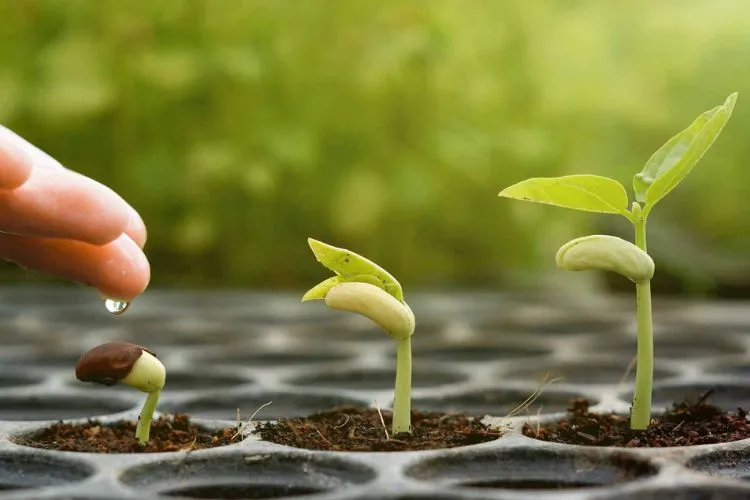
But what should you be on the lookout for? What are those initial indicators that promise a full bloom or fruitful yield down the road?
In this section, we’ll illuminate the subtle hints and evident markers of successful seed germination, helping you identify when your green thumb efforts are indeed paying off. Let’s uncover these harbingers of growth.
Germination time frames for common plants
Just as every plant species has its unique look, taste, and fragrance, each also follows its distinct germination timeline. For instance:
- Lettuce: Often sprouts within 7-10 days.
- Tomatoes: You can expect sprouts in 5-10 days under ideal conditions.
- Peppers: A slightly longer wait, with germination typically occurring between 10-14 days.
- Cucumbers: A rapid sprouter, you might see signs in as short as 3-7 days.
- Carrots: Patience is key here, as germination might stretch from 14-21 days.
It’s beneficial to refer to seed packets or cultivation guides for specific plants to set accurate expectations.
Initial growth stages
The first steps in a seed’s journey to becoming a full-fledged plant are systematic. It all starts with:
Radicle emergence
The radicle is the inaugural root that emerges from the seed, marking the beginning of the germination process. It anchors the seed in the soil, allowing the young plant to start absorbing vital nutrients. If you’re ever curious and gently unearth a recently sown seed, spotting the radicle is a clear sign that germination is underway.
Cotyledon appearance
Following the radicle, the cotyledons (or seed leaves) make their appearance. These are not the true leaves but rather a part of the seed itself, which supplies the initial nutrients to the young plant. Their emergence above the soil is a moment of celebration, indicating that the seedling is well on its way.
Monitoring seedlings
Keeping a vigilant eye on young seedlings is both a joy and a responsibility. Monitor their growth, ensuring they receive adequate water without becoming waterlogged. Regularly check the color and health of the leaves, and ensure they get sufficient light.
This tender phase is crucial; consistent monitoring not only ensures the health of the seedling but also allows you to spot any potential issues early on, setting the stage for a thriving plant.
Recognizing the Red Flags
The journey from seed to sprout is not always a smooth sail. While those initial signs of germination can stir elation, it’s equally vital to be attuned to the signals that something might be amiss.
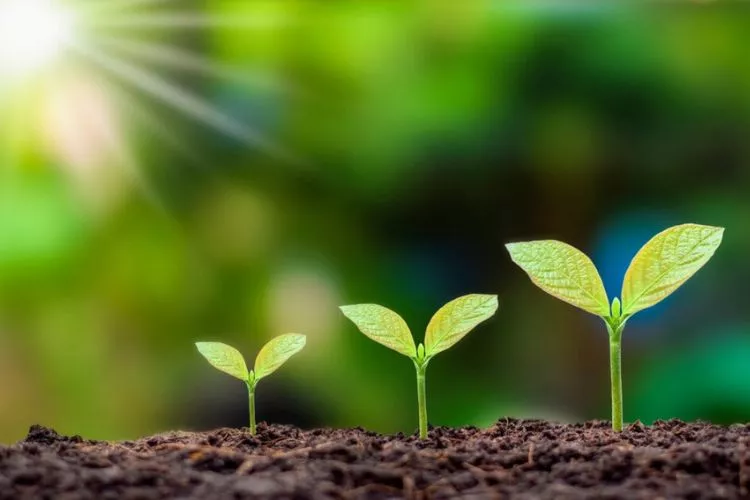
By recognizing these red flags early, you can either intervene to salvage your plant or recalibrate your approach for future endeavors. Let’s delve into the signs that all might not be as it should in the realm of germination.
Prolonged germination
Every seed type comes with an expected germination window. However, if your seeds are taking considerably longer than anticipated, it’s a sign they might be struggling. Prolonged germination can result from several reasons: inadequate environmental conditions, aged seeds, or unsuitable soil pH.
It’s essential to ensure that the conditions are optimal and double-check the expected germination period for the particular seeds in question.
Mold or fungal growth
Mold or fuzzy fungal growth on the soil’s surface or around the seed itself is a glaring red flag. Overwatering or poor drainage often causes this. It’s not just an aesthetic issue; mold can inhibit germination and harm sprouting seedlings. Ensure the soil drains well, and avoid keeping it consistently damp.
Visible seed decay
If you observe a seed turning dark, becoming mushy, or disintegrating, it’s an indicator of decay. Seeds that are compromised or planted in overly wet conditions can rot before they even get a chance to sprout. It’s best to remove such seeds to prevent potential diseases from affecting surrounding plants.
Weak or deformed seedlings
Once your seedlings emerge, they should showcase vigor and strength. However, if they appear frail, with yellowing leaves or seem to be growing at odd angles, they might be facing challenges. These deformities can result from inadequate light, overwatering, or even genetic issues within the seed.
Stunted growth
Your seedling sprouted, but is it growing at a snail’s pace? Stunted growth can be due to various reasons: lack of nutrients in the soil, compacted soil that restricts root growth, or even pest attacks. Ensure your seedlings are in a nutrient-rich medium and keep an eye out for any pests that might be feasting on them.
No signs of life
Perhaps the most disheartening red flag is seeing no activity whatsoever. You’ve waited beyond the germination window, and the soil remains as it was – devoid of any green. It could be that the seeds were unviable to start with or that they were buried too deep. If you’ve double-checked all conditions and still see no signs of life, it might be time to consider starting anew.
You may also read: Best Ways To Germinate Seeds For Hydroponics | How to Propagate Bird of Paradise?
The Decision-Making Process
Ah, the gardener’s conundrum! You’ve lovingly tended to your seeds, waited with bated breath, yet are met with uncertainty. Should you continue your nurturing efforts, hoping for a turnaround? Or is it wiser to accept the situation and start afresh?
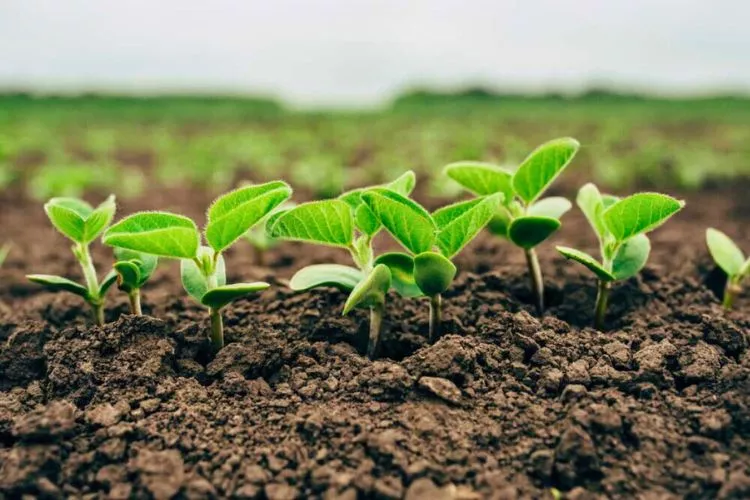
Making the call can be emotionally charged, especially when you’ve invested time and care. In this section, we’ll guide you through the decision-making process, equipping you with the insights to determine the next steps for your germination journey.
Because, sometimes, knowing when to hold on and when to let go can make all the difference in fostering a flourishing garden.
Assessing the potential for recovery
Before making any snap decisions, it’s essential to evaluate the likelihood of a seed or seedling bouncing back. Not all slow starters are doomed; sometimes, a little extra care or a change in conditions can spark a turnaround.
Study the seeds and emerging plants carefully. Are there any tiny green shoots trying to break free, or are seeds simply rotting away? Your observations are critical in this assessment phase.
Factors to consider
Making an informed decision involves weighing multiple considerations. It’s not just about what’s happening right now but also about the bigger picture and future implications.
Time invested
Consider the duration you’ve been waiting. If it’s only a few days beyond the average germination time, you might want to give it a bit longer. However, if weeks have passed with no progress, it could be a sign to rethink.
Resources expended
Factor in the resources – be it the special soil you purchased, the organic fertilizers you applied, or the effort you’ve put into daily care. Is it worth continuing to pour more resources into seeds or seedlings that show no promise?
Availability of replacement seeds
Sometimes, it’s a straightforward decision when you have a stash of replacement seeds at hand. But if the seeds were rare or costly, the decision might require more deliberation.
Gardener’s dilemma: Keep or discard?
Ultimately, it boils down to this central question. Your observations, coupled with the factors above, will guide you. If the seeds or seedlings show even a glimmer of potential, a bit more patience might be warranted.
On the other hand, if the signs point to a dead end, it might be more fruitful to start anew, armed with the lessons learned from this experience. Remember, every gardener faces this dilemma at some point, and each decision paves the way for future gardening triumphs.
Steps to Salvage Struggling Seedlings
Every gardener, whether novice or seasoned, has faced the challenge of weak or struggling seedlings. It’s a heart-tugging sight, those frail green shoots trying their best to thrive. But here’s the silver lining: not all is lost. With a keen eye, informed intervention, and a dash of determination, many struggling seedlings can be nurtured back to health.
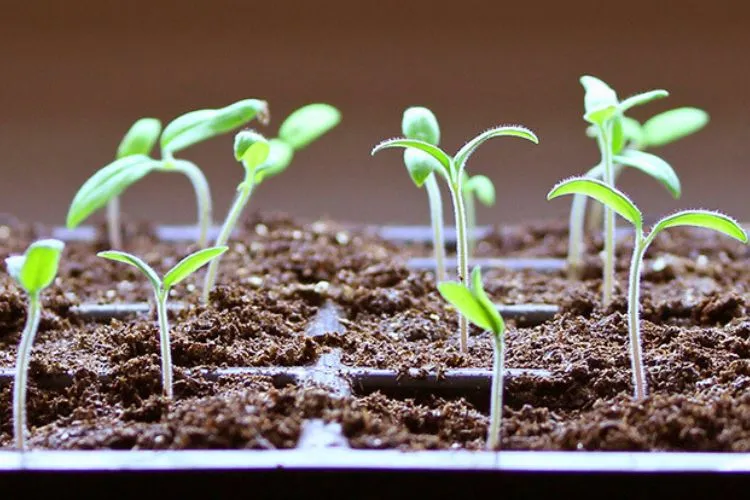
This section delves into actionable steps you can take to revive and bolster those delicate young plants. It’s about giving them a fighting chance and, in the process, rekindling the hope that springs eternal in every gardener’s heart.
Transplanting
Sometimes, the very environment a seedling is in can be stifling its growth. Transplanting can offer a fresh start. Choose a larger pot or a different spot in the garden that might be more conducive. Ensure minimal root disturbance during the process, and give the transplanted seedlings a good watering to help them settle in their new home.
Providing optimal care
It’s not just about watering and sunlight; it’s about understanding the unique needs of each plant species. Research the specific requirements of your seedlings – from moisture levels to preferred pH balance. Tailoring your care approach can make a world of difference in their revival journey.
Remedying common issues
Even with the best intentions, we can sometimes get it wrong. The key is recognizing these missteps early and course-correcting.
Overwatering or underwatering
Water is life, but too much or too little can be detrimental. If the soil is perpetually soggy, reduce watering frequency and ensure proper drainage. Conversely, if it’s bone dry, establish a consistent watering routine, ensuring the soil remains moist but not waterlogged.
Inadequate light
Seedlings stretching towards the light or appearing pale may be signaling a need for more sun. Conversely, those with scorched leaves might benefit from some shade. Adjust their position based on their light requirements, considering both the intensity and duration.
Poor soil quality
Nutrient-deficient soil can stunt seedling growth. If your plants seem lackluster despite proper care, consider enriching the soil with organic compost or a balanced fertilizer. Ensure the soil is also well-aerated to facilitate healthy root growth.
Pro Tips for Successful Seed Germination
Every gardener, novice or seasoned, yearns for the sight of sprouting seedlings, the very first hint of the bountiful harvest that awaits. Achieving consistent germination success isn’t just about planting and praying; it’s a blend of science, dedication, and continuous learning. Here are some pro tips to guide you on this fulfilling journey.
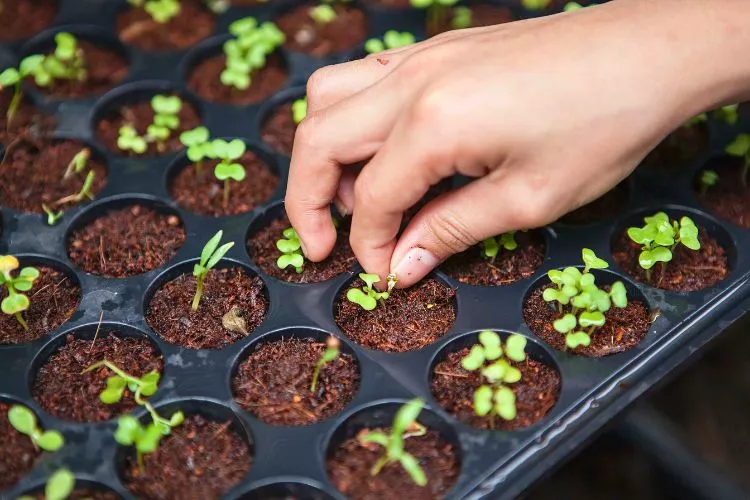
Start with quality seeds
Your garden’s success starts long before you plant. Invest in high-quality seeds from reputable sources. Check expiration dates and ensure they haven’t been stored under adverse conditions. Remember, quality seeds are the foundation of a thriving garden.
Ensure proper environmental conditions
Each seed variety has specific needs. Research your seeds’ preferred temperature range, soil pH, and moisture levels. Consider tools like heating mats for warmth-loving plants or shade cloths for those that need cooler conditions. Your seedlings’ environment is paramount to their success.
Be patient but vigilant
Gardening is a waiting game, but that doesn’t mean a passive stance. While patience is key, it’s essential to remain vigilant. Monitor soil moisture, watch for early signs of disease, and keep pests at bay. A proactive approach often means healthier seedlings.
Keep records of your gardening efforts
Maintain a gardening journal. Record planting dates, germination times, and any challenges faced. These records become an invaluable resource, helping you refine techniques and anticipate issues in subsequent seasons.
Embrace the learning experience
Mistakes happen, and not every seed will sprout. Instead of seeing this as failure, embrace it as a learning experience. Each challenge faced, each hurdle crossed, adds to your gardening acumen, preparing you for even grander gardening endeavors.
Frequently Asked Questions (fAQs)
Can all seeds be saved if they don’t germinate on time?
No, not all seeds can be saved. Some have a viability window, and if they don’t germinate within it, they’re unlikely to sprout later.
What can be done to prevent seedling issues?
Ensure proper soil quality, maintain optimal moisture levels, provide adequate light, and protect from extreme temperatures and pests.
How long should I wait before giving up on a seed?
Wait for the maximum germination time specified on the seed packet, plus a short grace period, before considering discarding.
Can I use seeds that failed to germinate for compost?
Yes, non-germinating seeds can be composted, returning their nutrients to the soil.
What are the best practices for seed storage?
Store seeds in a cool, dry place, preferably in airtight containers. Label with date and type. Some seeds benefit from refrigeration. Avoid extreme temperatures.
Conclusion
Gardening, at its core, is an art married to science. Successful seed germination hinges on quality seeds, the right environment, and a dash of patience. Remember to be vigilant in your care, learn from every experience, and always champion sustainable gardening practices.
The sheer joy of watching a tiny seed transform into a thriving plant is unmatched. We hope that this guide has been helpful. You can read about similar topics here on our website. Check back again soon for more.


